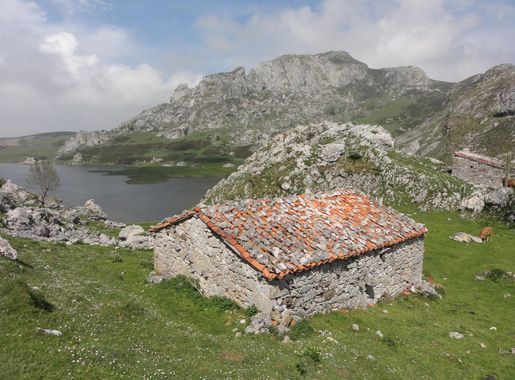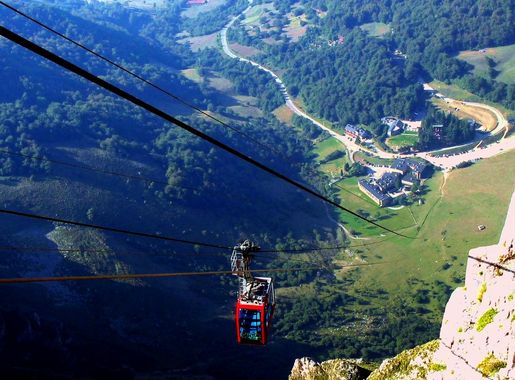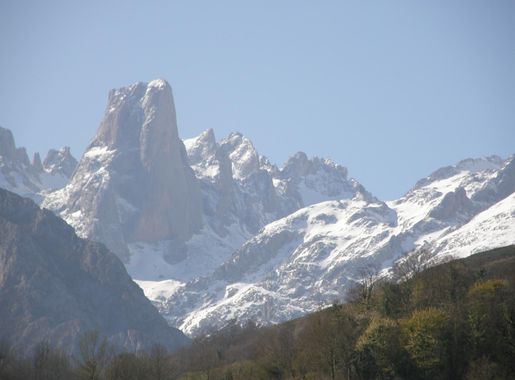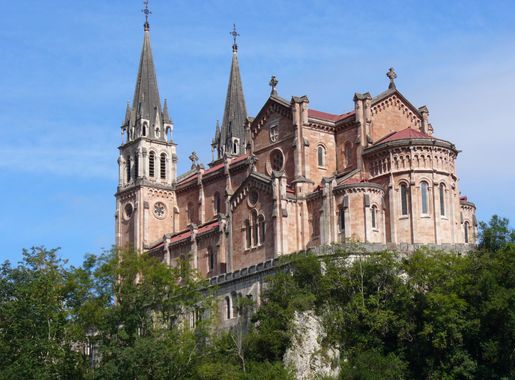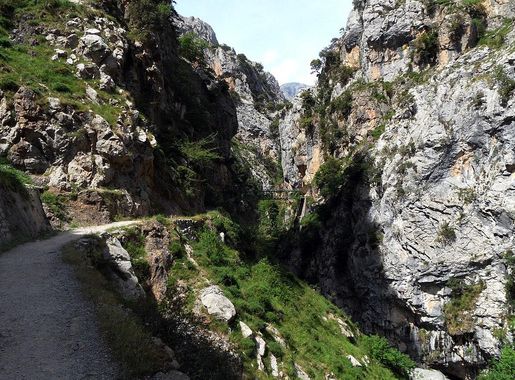
Picos de Europa: A Natural Paradise in Spain
Explore Picos de Europa: Spain's majestic mountain range with stunning landscapes, rich wildlife, and charming villages. A perfect blend of nature, adventure, and culture.
Nestled in northern Spain, the Picos de Europa is a mountain range that offers breathtaking landscapes and a rich cultural heritage. This natural paradise spans the regions of Asturias, Cantabria, and Castile and León, making it a diverse destination for any nature lover. The Picos de Europa is renowned for its stunning peaks, deep gorges, and lush valleys. The area is home to a variety of wildlife, including brown bears, wolves, and golden eagles. The hiking trails cater to all levels of experience, from easy walks to challenging climbs. The famous Cares Gorge trail is a must-visit for its dramatic scenery. The small, picturesque villages scattered throughout the Picos de Europa add to its charm. In places like Cangas de Onís and Potes, you can experience traditional Spanish culture and enjoy local cuisine. Don't miss the chance to try the delicious Cabrales cheese, a local specialty made from cow, sheep, and goat milk. The Picos de Europa National Park is also steeped in history. The Covadonga Lakes and the Sanctuary of Covadonga are significant historical and religious sites. The park's visitor centers provide insightful information about the area's natural and cultural history, enhancing your visit.
Local tips in Picos de Europa
- Visit in spring or autumn for the best weather and fewer tourists.
- Wear sturdy hiking boots and bring a waterproof jacket, as weather can be unpredictable.
- Carry some cash, as small village shops and restaurants may not accept credit cards.
- Try local dishes like Fabada Asturiana and Cabrales cheese for an authentic taste of the region.
- Book accommodations in advance during peak seasons to ensure availability.
Picos de Europa: A Natural Paradise in Spain
Nestled in northern Spain, the Picos de Europa is a mountain range that offers breathtaking landscapes and a rich cultural heritage. This natural paradise spans the regions of Asturias, Cantabria, and Castile and León, making it a diverse destination for any nature lover. The Picos de Europa is renowned for its stunning peaks, deep gorges, and lush valleys. The area is home to a variety of wildlife, including brown bears, wolves, and golden eagles. The hiking trails cater to all levels of experience, from easy walks to challenging climbs. The famous Cares Gorge trail is a must-visit for its dramatic scenery. The small, picturesque villages scattered throughout the Picos de Europa add to its charm. In places like Cangas de Onís and Potes, you can experience traditional Spanish culture and enjoy local cuisine. Don't miss the chance to try the delicious Cabrales cheese, a local specialty made from cow, sheep, and goat milk. The Picos de Europa National Park is also steeped in history. The Covadonga Lakes and the Sanctuary of Covadonga are significant historical and religious sites. The park's visitor centers provide insightful information about the area's natural and cultural history, enhancing your visit.
When is the best time to go to Picos de Europa?
Iconic landmarks you can’t miss
Roman bridge in Cangas de Onis
Experience the charm of the Roman Bridge in Cangas de Onís, a historical landmark that captures the essence of Asturias' rich heritage and stunning landscapes.
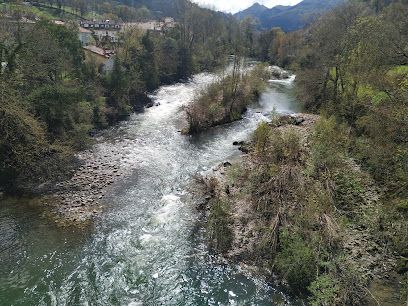
Picos de Europa National Park
Discover the breathtaking beauty of Picos de Europa National Park, a UNESCO Biosphere Reserve, where adventure and nature meet in Asturias, Spain.

Teleférico Fuente Dé
Explore the breathtaking heights of Teleférico Fuente Dé, where stunning views and outdoor adventures await in the heart of Picos de Europa National Park.
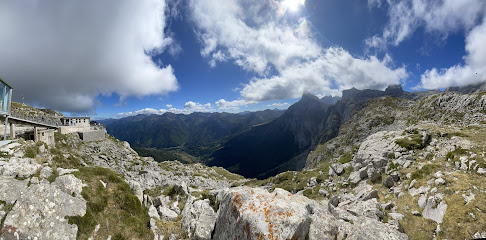
Mirador del Naranjo de Bulnes (Picu Urriellu)
Experience stunning views and natural beauty at Mirador del Naranjo de Bulnes, a must-visit scenic spot in the heart of Asturias, Spain.
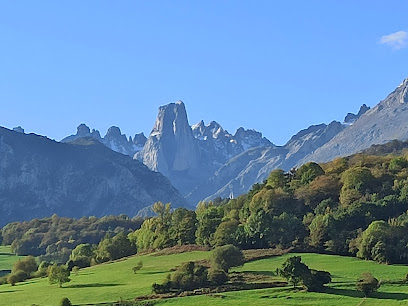
Sotama Visitor Center
Explore the beauty of Cantabria at the Sotama Visitor Center, your gateway to nature, education, and breathtaking landscapes.
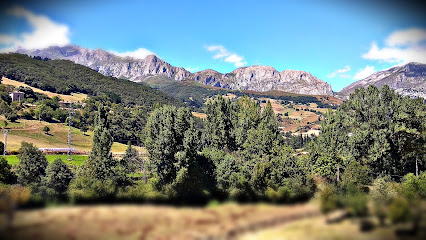
Mirador del Tombo
Experience breathtaking views of the Picos de Europa National Park at Mirador del Tombo, a top tourist attraction for nature lovers and adventurers.

Bulnes - El Castillo
Experience the breathtaking beauty and rich history of Bulnes - El Castillo in the heart of Asturias, a must-visit destination for every traveler.
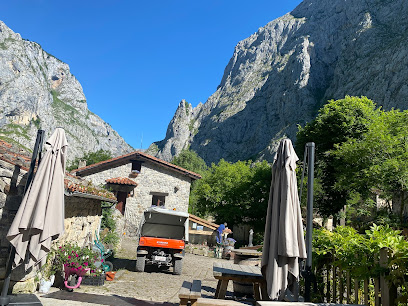
Mirador d'Ordiales
Experience breathtaking views and serene nature at Mirador d'Ordiales, an observation deck in the stunning Asturias region of Spain.
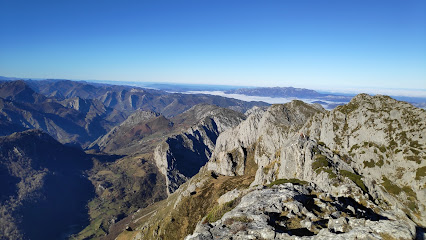
Panes Aventura Guias de Picos de Europa
Explore the thrilling landscapes of Picos de Europa with expert-guided adventure sports at Panes Aventura for an unforgettable experience.
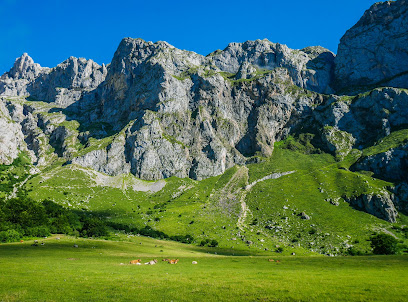
Unmissable attractions to see
Cueva del Queso de Cabrales
Explore the rich tradition of Cabrales cheese at the Cueva del Queso de Cabrales, a unique museum in Asturias showcasing artisanal cheese-making processes.

Saint Catherine Lookout
Discover stunning vistas and the natural beauty of Cantabria at the picturesque Saint Catherine Lookout, a must-visit observation deck for every traveler.
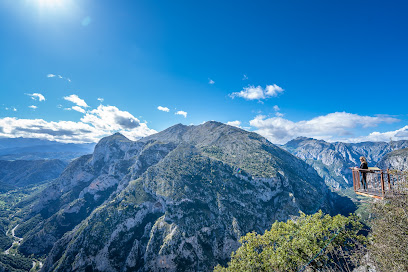
Mirador de La Reina
Experience breathtaking views and the serene beauty of nature at Mirador de La Reina, a top scenic spot in Asturias, Spain.
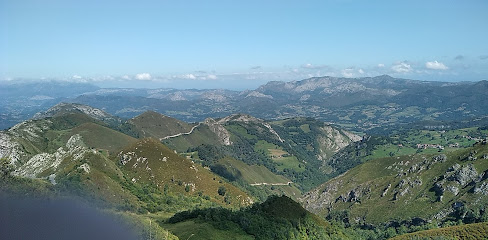
Mirador del Naranjo de Bulnes (Picu Urriellu)
Experience the stunning beauty of Mirador del Naranjo de Bulnes, a must-visit scenic viewpoint in Asturias with breathtaking views of Picu Urriellu.
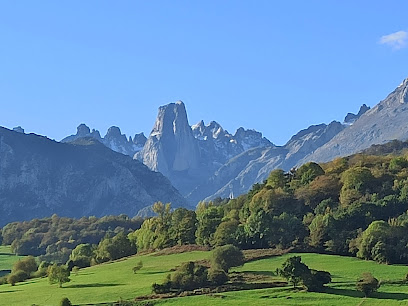
Torre del Infantado
Explore the enchanting Torre del Infantado, a cultural gem in Potes, Cantabria, rich in history and breathtaking views.
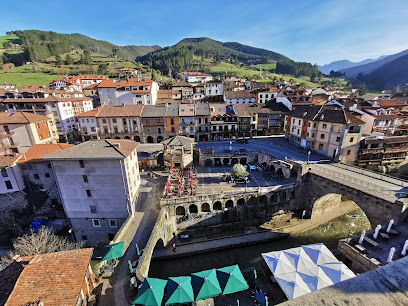
Sotama Visitor Center
Experience the heart of Cantabria at the Sotama Visitor Center, your gateway to nature, culture, and adventure in this stunning Spanish region.
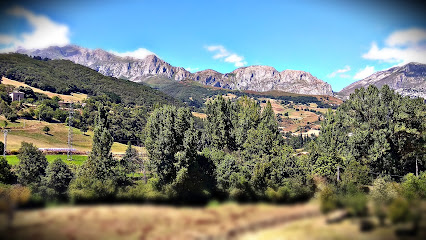
Centro de Interpretación de Los Picos de Europa
Explore the breathtaking biodiversity and geological wonders of Picos de Europa at the Centro de Interpretación, a must-see museum in Cantabria.
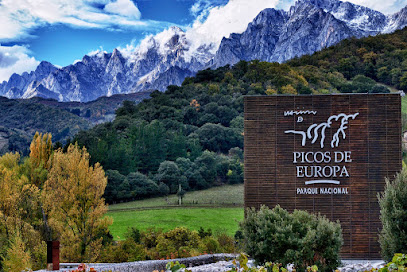
Desfiladero de los Beyos
Explore the breathtaking Desfiladero de los Beyos, a stunning gorge in Asturias, Spain, offering adventure, beauty, and rich cultural experiences.
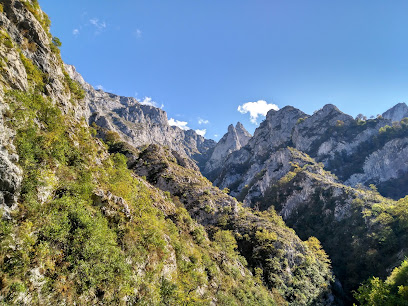
Puente La Jaya
Experience the breathtaking beauty of Puente La Jaya, an architectural gem in Asturias, where nature and adventure await every traveler.
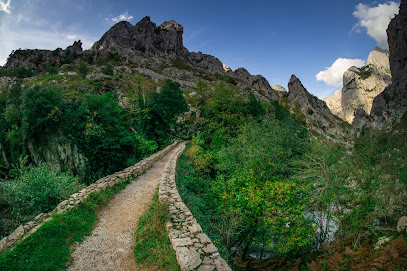
Mirador Echevarria Pedro Udaondo
Discover breathtaking vistas at Mirador Echevarria Pedro Udaondo, a stunning viewpoint in Asturias perfect for nature lovers and photographers.
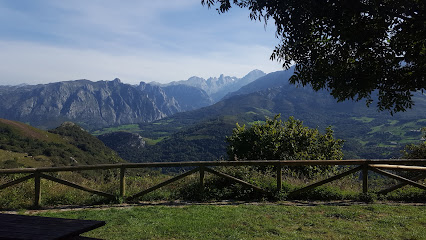
Ermita de San Tirso
Discover the serene beauty of Ermita de San Tirso in Cantabria, a captivating nature preserve blending rich history with stunning landscapes.
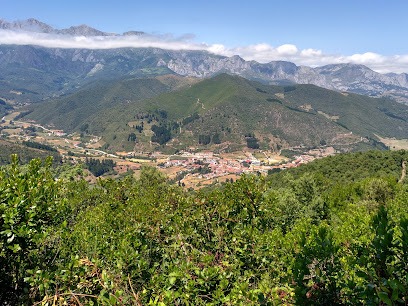
El Chorco de los Lobos
Discover the enchanting El Chorco de los Lobos, a historical landmark in Valdeón Valley, rich in heritage and surrounded by breathtaking nature.

Peña Tú
Explore the ancient wonders of Peña Tú, a historical landmark in Asturias, where nature and culture merge seamlessly.
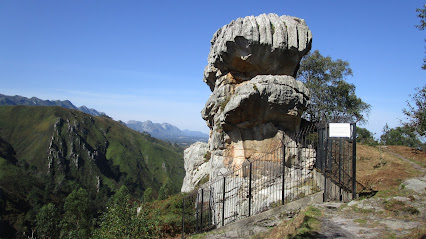
Portal Peak
Experience the ultimate outdoor adventure at Portal Peak in Cantabria, Spain – a paradise for hiking, biking, and unforgettable nature immersion.

Cascade Aguasaliu
Explore Cascade Aguasaliu: A stunning natural waterfall in Asturias, Spain, perfect for hikers, nature lovers, and those seeking tranquility.

Essential places to dine
Vicente Campo Restaurante
Experience authentic Spanish cuisine amidst breathtaking views at Vicente Campo Restaurante in Espinama.
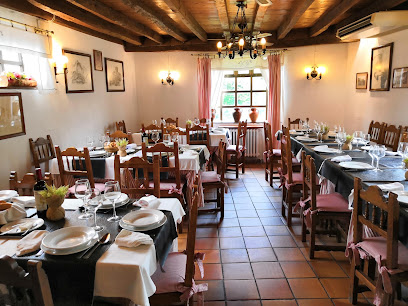
Venta de Vieda
Discover Venta de Vieda in Cantabria: A delightful grill restaurant offering authentic Spanish flavors in a cozy atmosphere.
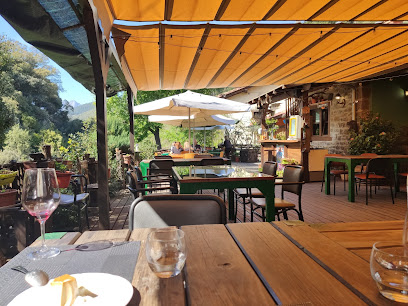
Restaurante Los Molinos (Liébana)
Experience authentic Spanish cuisine at Restaurante Los Molinos in Liébana - where every meal is a celebration of local flavors amidst breathtaking scenery.
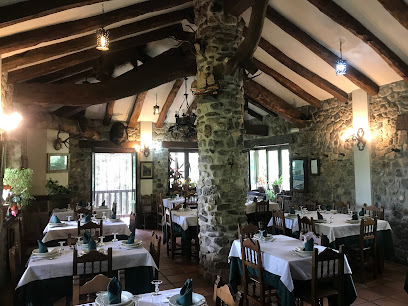
Restaurante Casa Corro
Discover the authentic taste of Asturias at Restaurante Casa Corro – where tradition meets flavor in every bite.
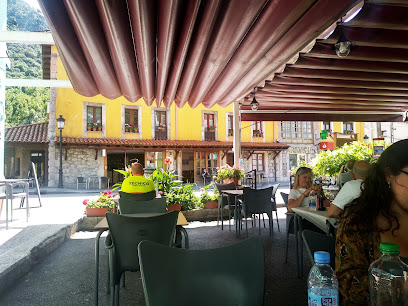
Casa Fofi Restaurante
Experience authentic Cantabrian cuisine at Casa Fofi Restaurante in Tama – where tradition meets flavor in every dish.
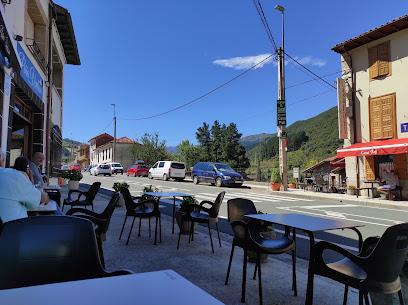
Mesón Los Llanos
Savor traditional Cantabrian dishes at Mesón Los Llanos - where authentic flavors meet warm hospitality.
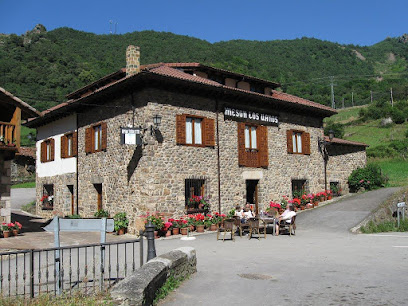
Casa Cuevas
Discover Casa Cuevas: A delightful grill and guest house offering authentic local cuisine in beautiful Caín de Valdeón.
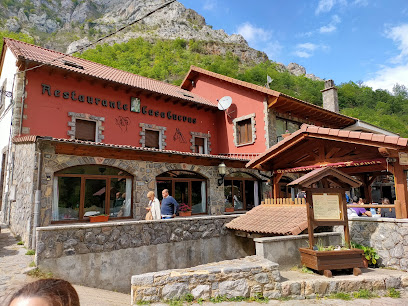
Taberna Mirador Peña Sagra
Experience exquisite grilled cuisine with breathtaking views at Taberna Mirador Peña Sagra in Cabezón de Liébana, Cantabria.
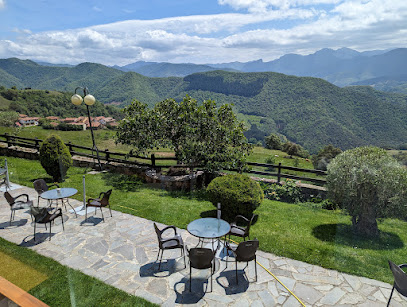
Hostal Restaurante Nevandi
Experience authentic Cantabrian flavors at Hostal Restaurante Nevandi - where delicious food meets warm hospitality in scenic Espinama.

Hotel Rural Restaurante Peña Castil
Experience traditional Asturian hospitality at Hotel Rural Restaurante Peña Castil amidst breathtaking landscapes and delicious local cuisine.

La Casa del Chiflón & La Casa del Puente NO SE HACEN RESERVAS DE MESAS
Experience the perfect blend of comfort and local cuisine at La Casa del Chiflón in beautiful Bulnes, Asturias.
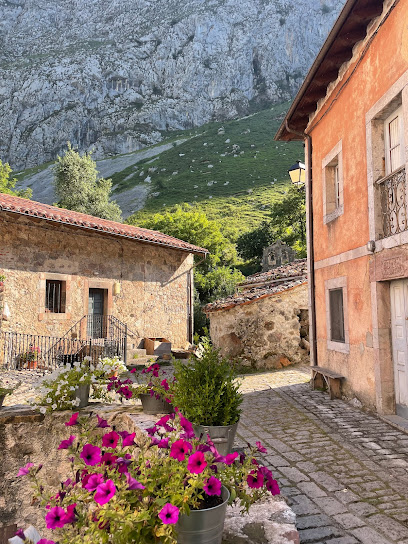
Casa Mi Güelu
Discover authentic Spanish cuisine in Sotres at Casa Mi Güelu – a charming restaurant offering local flavors and stunning views.
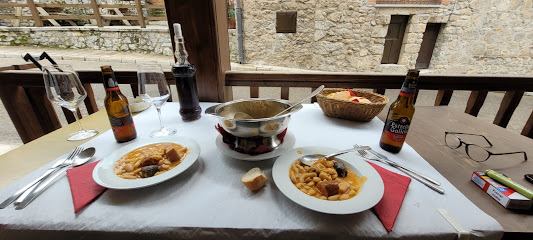
Hotel Restaurante Casa CIPRIANO
Discover Hotel Restaurante Casa CIPRIANO: A perfect blend of Asturian tradition and hospitality nestled in stunning mountain scenery.

EL Desvan Valdeon
Experience authentic León cuisine at El Desvan Valdeon in Posada de Valdeón, where local flavors meet warm hospitality.
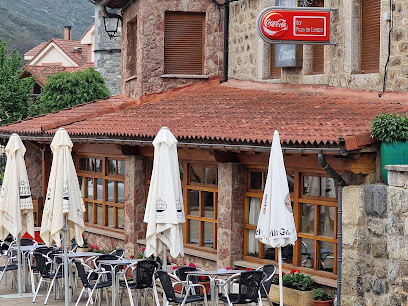
Bar Mirador Lallende
Discover authentic Asturian cuisine at Bar Mirador Lallende while enjoying breathtaking views in Bulnes.
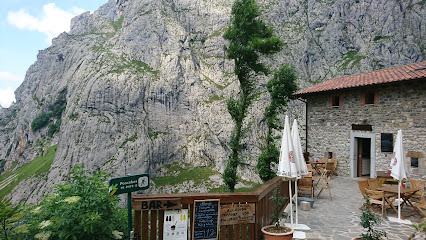
Markets, malls and hidden boutiques
Souvenirs Picos de Europa
Explore unique handmade treasures and local crafts at Souvenirs Picos de Europa in Cangas de Onís, capturing the spirit of Asturias.

Queseria Río Deva
Explore Queseria Río Deva: Experience the finest artisanal cheeses from Cantabria's rich culinary tradition.
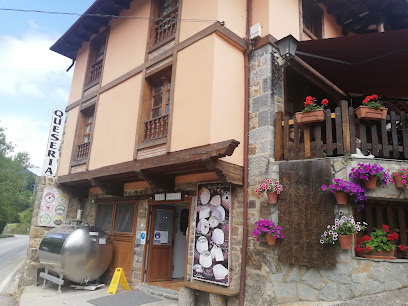
Quesería Main
Explore the culinary delights of Asturias at Quesería Main, where artisanal cheeses and local flavors come to life in a charming setting.

Cable - Teleférico Fuente Dé
Discover breathtaking views and outdoor adventures at Teleférico Fuente Dé, the gateway to the stunning Picos de Europa in Cantabria, Spain.
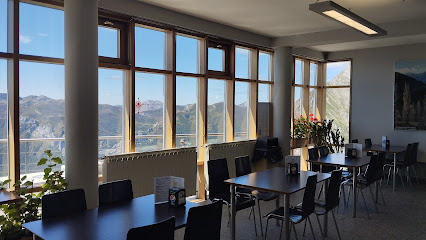
Portal Peak
Experience the Outdoor Adventure of Portal Peak: Hiking, Biking, Skiing, and More in the Heart of Cantabria's National Park.
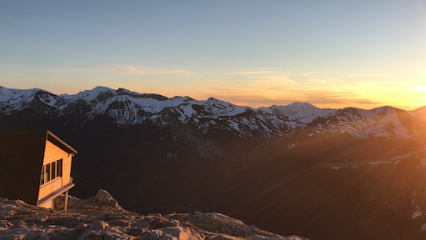
La Tienda de Nuria Potes
Explore La Tienda de Nuria in Potes for unique artisanal crafts and home goods that capture the essence of Cantabria's rich culture.
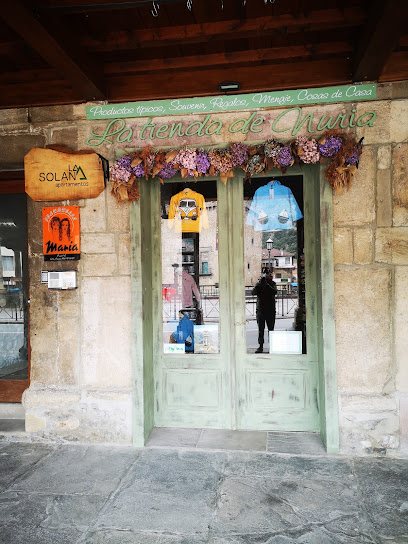
Official Store of the Sanctuary of Covadonga
Explore the Official Store of the Sanctuary of Covadonga for unique religious artifacts and local souvenirs in a stunning natural setting.
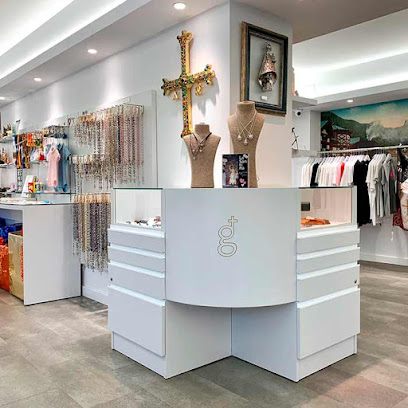
Elvira y tú
Explore Elvira y tú in Potes, Cantabria for unique clothing, accessories, and home goods that showcase local creativity and charm.
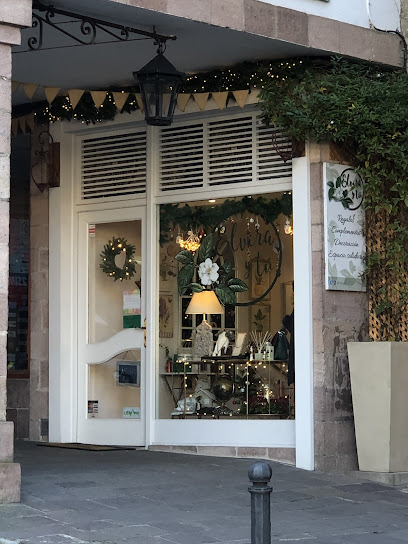
La Coqueta Potes
Explore the unique blend of modern and traditional fashion at La Coqueta Potes, a must-visit clothing store in the heart of Cantabria.
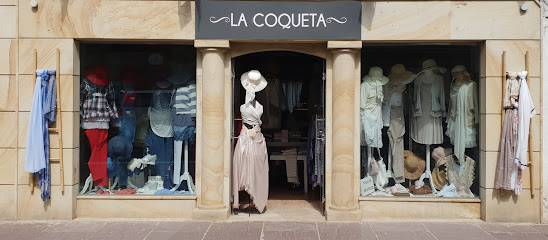
Quesería Picos de Europa
Discover the rich flavors of León at Quesería Picos de Europa, a charming cheese shop offering artisanal local cheeses in a stunning natural setting.
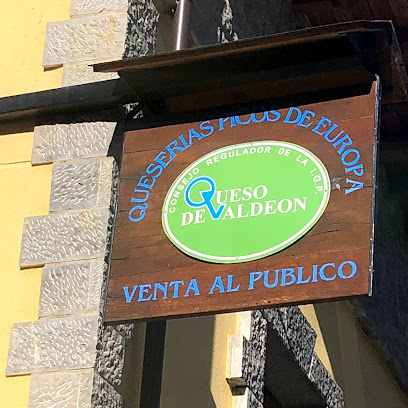
EMBUTIDOS PELLICO
Experience the authentic taste of Asturias at Embutidos Pellico, a must-visit grocery store for traditional cured meats and local delicacies.
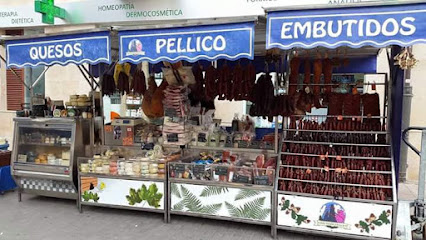
CENDON OUTDOOR
Discover the best outdoor gear and expert advice at Cendon Outdoor, your ultimate adventure store in Asturias.
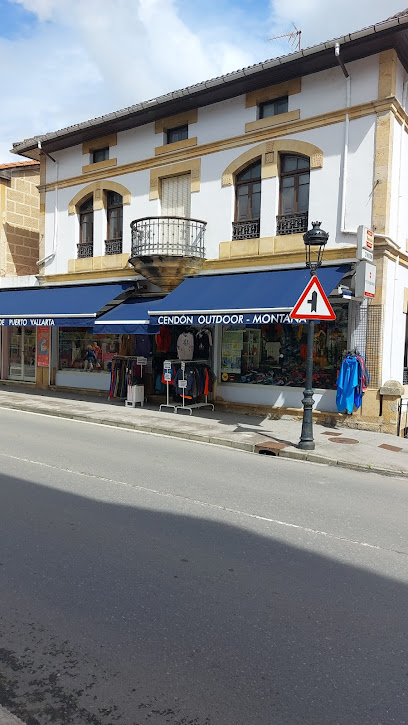
Supermercado La Ruta
Experience authentic local shopping at Supermercado La Ruta in Caín de Valdeón, where freshness and community come together.
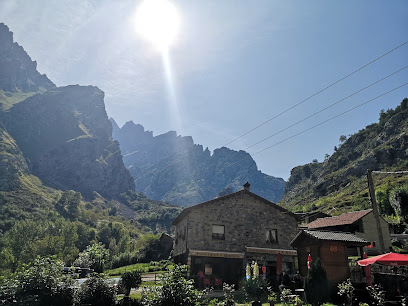
Alma Caliza
Experience the essence of Asturias at Alma Caliza, a charming cosmetics store in Las Arenas offering local artisanal beauty products.
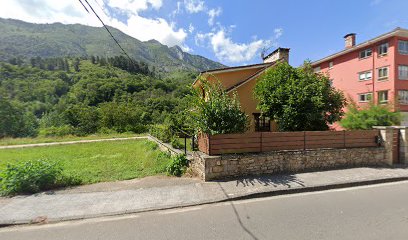
Bustamante Potes
Discover unique custom t-shirts and detailed maps at Bustamante Potes, a charming novelty store in the heart of Cantabria.
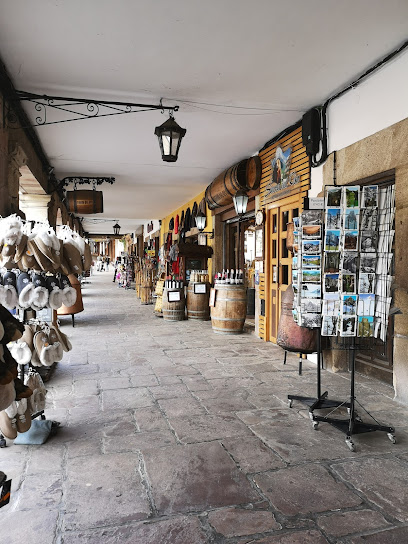
Essential bars & hidden hideouts
Casa Cuevas
Experience the flavors of León at Casa Cuevas, a beloved grill and guest house nestled in the breathtaking Caín de Valdeón, perfect for food lovers and nature enthusiasts alike.
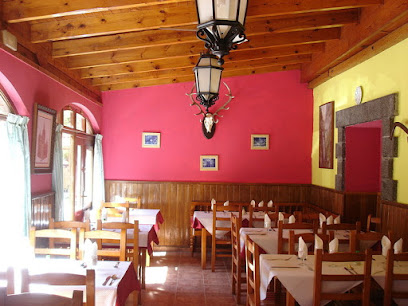
Bar Picos de Europa
Discover the flavors of Asturias at Bar Picos de Europa, a charming bar and restaurant in the heart of Llanes, perfect for a memorable culinary experience.
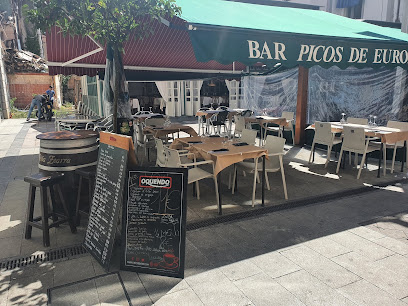
Casa Mi Güelu
Experience authentic Spanish cuisine in the heart of Sotres at Casa Mi Güelu, where local flavors and warm hospitality meet.
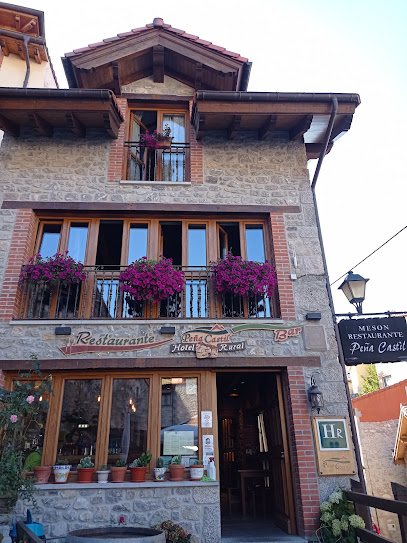
Bar la Fuentina
Discover the charm of Asturias at Bar la Fuentina, where local flavors and warm hospitality await in the heart of Camarmeña.
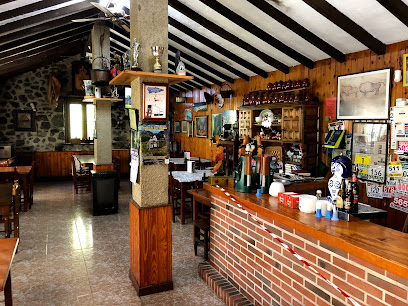
Bar Mirador Lallende
Discover the culinary delights of Asturias at Bar Mirador Lallende, where stunning views meet authentic local flavors in a cozy setting.
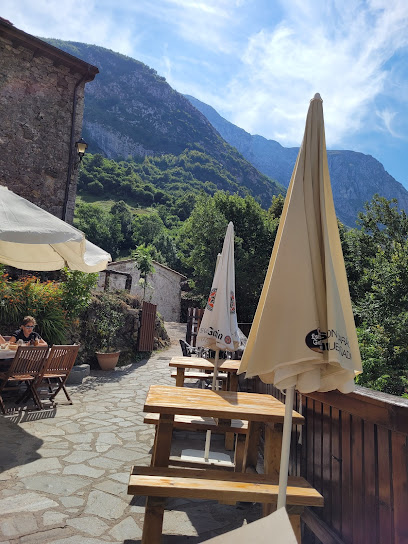
Bar Pub La Reunión
Experience the vibrant nightlife at Bar Pub La Reunión in Potes, where drinks flow and laughter fills the air.
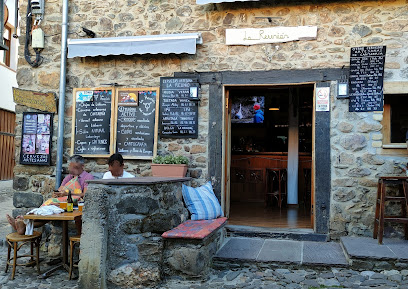
Bar El Carteru La Bolera
Experience the authentic taste of Asturias at Bar El Carteru La Bolera, a charming bar and restaurant in Tielve, offering local dishes and a warm atmosphere.
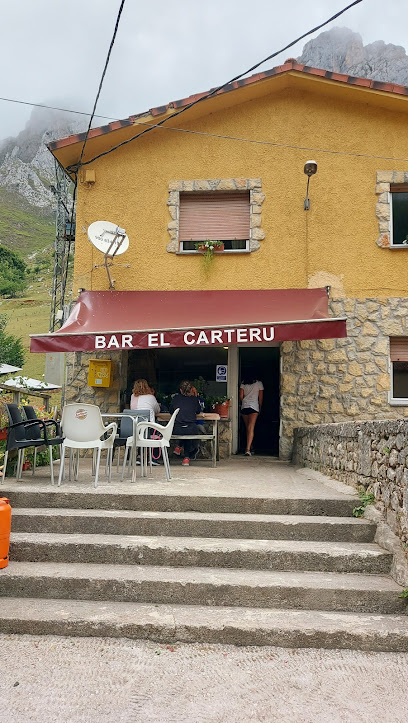
Bar Máximo
Discover the essence of Cantabrian cuisine at Bar Máximo, a cozy restaurant and grill in Espinama, perfect for a delightful dining experience.
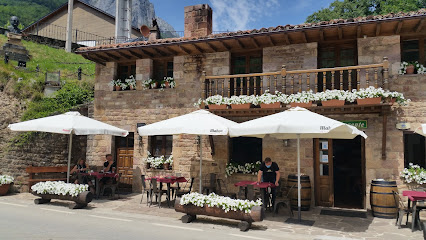
Casa Aída
Discover the authentic taste of Asturias at Casa Aída, where every tapas dish is a celebration of Spanish culinary heritage.
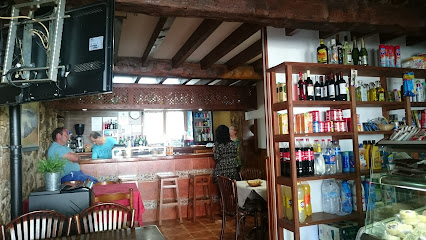
El Caleyon - Alojamiento - Bar - Restaurante
Discover the perfect blend of bar, restaurant, and guest house at El Caleyon in Bulnes, Asturias, where local flavors meet breathtaking scenery.
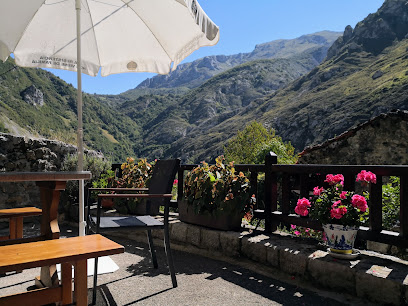
El Mundo De La Cerveza
Experience the vibrant craft beer scene at El Mundo De La Cerveza, where local flavors and passionate brewers come together in a welcoming atmosphere.
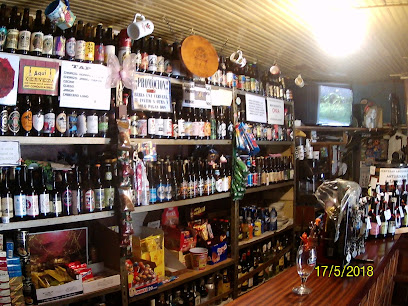
El Sitio del Valle
Experience the charm of Cantabria at El Sitio del Valle, where local drinks and friendly vibes create an unforgettable pub experience.
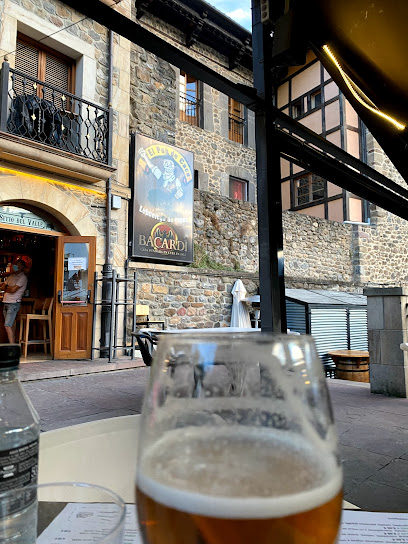
Bar Lola
Discover the flavors of traditional Spanish grilling at Bar Lola in the enchanting village of Caín de Valdeón, León.
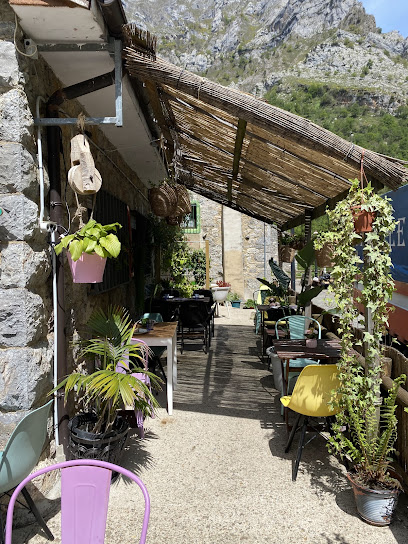
Bar Las Vegas de Sotres
Discover the heart of Asturias at Bar Las Vegas de Sotres, where local flavors and breathtaking views create an unforgettable dining experience.
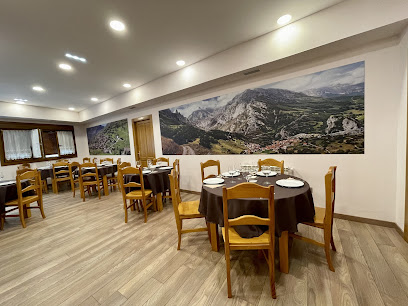
Bar La Caxiga
Experience authentic Asturian culture at Bar La Caxiga, where traditional tapas and local beverages create an unforgettable dining experience.
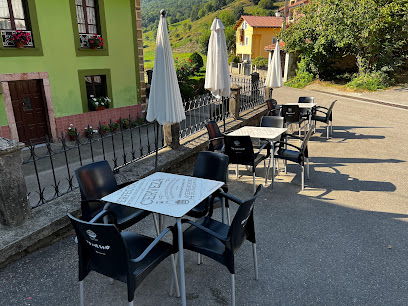
Local Phrases about Picos de Europa
-
- HelloHola
[oh-lah] - GoodbyeAdiós
[ah-dee-ohs] - YesSí
[see] - NoNo
[noh] - Please/You're welcomePor favor/De nada
[por fah-vor/deh nah-dah] - Thank youGracias
[grah-thyahs] - Excuse me/SorryPerdón/Lo siento
[pehr-dohn/loh syen-toh] - How are you?¿Cómo estás?
[koh-moh ehs-tahs] - Fine. And you?Bien. ¿Y tú?
[byen. ee too] - Do you speak English?¿Hablas inglés?
[ah-blahs een-glehs] - I don't understandNo entiendo
[noh ehn-tee-ehn-doh]
- HelloHola
-
- I'd like to see the menu, pleaseMe gustaría ver la carta, por favor
[meh goos-tah-ree-ah behr lah kahr-tah, por fah-vor] - I don't eat meatNo como carne
[noh koh-moh kahr-neh] - Cheers!¡Salud!
[sah-lood] - I would like to pay, pleaseMe gustaría pagar, por favor
[meh goos-tah-ree-ah pah-gar, por fah-vor]
- I'd like to see the menu, pleaseMe gustaría ver la carta, por favor
-
- Help!¡Ayuda!
[ah-yoo-dah] - Go away!¡Vete!
[veh-teh] - Call the Police!¡Llama a la policía!
[yah-mah ah lah poh-lee-see-ah] - Call a doctor!¡Llama a un médico!
[yah-mah ah oon meh-dee-koh] - I'm lostEstoy perdido
[ehs-toy pehr-dee-doh] - I'm illEstoy enfermo
[ehs-toy ehn-fehr-moh]
- Help!¡Ayuda!
-
- I'd like to buy...Me gustaría comprar...
[meh goos-tah-ree-ah kohm-prahr...] - I'm just lookingSolo estoy mirando
[soh-loh ehs-toy meer-ahn-doh] - How much is it?¿Cuánto cuesta?
[kwan-toh kwehs-tah] - That's too expensiveEs demasiado caro
[ehs deh-mah-syah-doh kah-roh] - Can you lower the price?¿Puedes bajar el precio?
[pweh-dehs bah-har ehl pree-syoh]
- I'd like to buy...Me gustaría comprar...
-
- What time is it?¿Qué hora es?
[keh oh-rah ehs] - It's one o'clockEs la una
[ehs lah oo-nah] - Half past (10)Y media (diez)
[ee meh-dee-ah (dyeth)] - MorningMañana
[mah-nyah-nah] - AfternoonTarde
[tahr-deh] - EveningNoche
[noh-cheh] - YesterdayAyer
[ah-yehr] - TodayHoy
[oy] - TomorrowMañana
[mah-nyah-nah] - 1Uno
[oo-noh] - 2Dos
[dohs] - 3Tres
[trehs] - 4Cuatro
[kwah-troh] - 5Cinco
[theen-koh] - 6Seis
[seh-ees] - 7Siete
[syeh-teh] - 8Ocho
[oh-choh] - 9Nueve
[nweh-veh] - 10Diez
[dyeth]
- What time is it?¿Qué hora es?
-
- Where's a/the...?¿Dónde está el/la...?
[dohn-deh ehs-tah ehl/lah] - What's the address?¿Cuál es la dirección?
[kwal ehs lah dee-rehk-syohn] - Can you show me (on the map)?¿Puedes enseñarme (en el mapa)?
[pweh-dehs ehn-seh-nyar-meh (ehn ehl mah-pah)] - When's the next (bus)?¿Cuándo es el próximo (autobús)?
[kwan-doh ehs ehl proh-ksy-moh (ow-toh-boos)] - A ticket (to ....)Un billete (a ....)
[oon bee-ye-teh (ah ....)]
- Where's a/the...?¿Dónde está el/la...?
History of Picos de Europa
-
The history of Picos de Europa begins in prehistoric times, with evidence of human habitation dating back to the Paleolithic era. The area is rich with ancient cave paintings and artifacts, particularly in the Cares and Covadonga regions. These early inhabitants relied on the region’s unique geography and abundant resources for survival.
-
During the Roman period, the Picos de Europa played a pivotal role in the expansion of the Roman Empire into the Iberian Peninsula. The rugged terrain posed significant challenges, but the Romans established several routes through the mountains, connecting key settlements and facilitating trade and military movements. Architectural remnants, such as road markers and fortifications, still hint at their presence.
-
One of the most significant historical events associated with the Picos de Europa is the Battle of Covadonga in 722 AD. This battle marked the beginning of the Christian Reconquista of Spain from the Moors. Led by Pelayo, a Visigothic noble, a small Christian force took refuge in the caves of Covadonga and successfully repelled a much larger Moorish army. This victory is often considered the foundation of the Kingdom of Asturias.
-
Throughout the medieval period, the Picos de Europa became a sanctuary for monastic communities. Monasteries such as Santo Toribio de Liébana were established as centers of religious scholarship and pilgrimage. The Beatus of Liébana, a monk from this monastery, authored the 'Commentary on the Apocalypse,' a significant manuscript that influenced religious thought throughout medieval Europe.
-
The 19th century marked a period of exploration and scientific study in the Picos de Europa. Naturalists and geologists were drawn to the region's unique flora, fauna, and geological formations. Figures such as German geographer Friedrich Parrot conducted detailed studies, contributing significantly to the scientific understanding of the region. This era also saw the rise of mountaineering as a popular pursuit, with the Picos de Europa attracting climbers from across Europe.
-
In 1918, parts of the Picos de Europa were designated as Spain's first National Park, initially known as the Parque Nacional de la Montaña de Covadonga. This recognition aimed to preserve the natural beauty and cultural heritage of the area. Over the years, the park has expanded and now covers over 67,000 hectares, encompassing diverse landscapes and ecosystems, and continues to be a beacon for conservation efforts.
-
Today, the Picos de Europa continues to be a vital cultural and natural landmark in Spain. The region hosts numerous traditional festivals, such as the Fiesta del Pastor, celebrating the pastoral heritage of the highland communities. The area's unique blend of history, culture, and natural beauty attracts thousands of visitors each year, making it a significant contributor to local economies and a symbol of Spanish heritage.
Picos de Europa Essentials
-
Picos de Europa is located in northern Spain, spanning across the regions of Asturias, Cantabria, and Castile and León. The nearest major airports are Asturias Airport (OVD) and Santander Airport (SDR). From these airports, you can rent a car or take a bus to reach towns such as Cangas de Onís, Potes, and Arenas de Cabrales, which serve as gateways to the park. Another option is to take a train to the nearest major cities like Oviedo or Santander and then continue by bus or car.
-
Public transportation within Picos de Europa is limited, so renting a car is highly recommended for convenience and flexibility. Buses do operate between some of the larger towns and villages, but they are infrequent. Taxis are available but can be costly for longer distances. Walking and hiking are popular within the park, and many trails are well-marked and maintained.
-
The official currency in Spain is the Euro (EUR). Credit and debit cards are widely accepted in most hotels, restaurants, and shops in the region. However, it’s advisable to carry some cash, especially if you plan to visit smaller villages where card payment may not be accepted. ATMs are available in the larger towns surrounding the park.
-
Picos de Europa is generally a safe destination for tourists, with low crime rates. However, standard safety precautions should be observed. Avoid leaving valuables unattended and be cautious in crowded areas. There are no specific high-crime neighborhoods targeting tourists, but always stay vigilant and aware of your surroundings.
-
In case of an emergency, dial 112 for immediate assistance. This number connects you to police, medical services, and fire departments. It is advisable to have travel insurance that covers medical emergencies. There are medical facilities and pharmacies in the larger towns around Picos de Europa. For minor health issues, local pharmacies can provide over-the-counter medications.
-
Fashion: Do wear comfortable, weather-appropriate clothing, especially if you plan to hike. Layers are recommended due to variable mountain weather. Religion: Do respect local religious customs, especially if visiting churches or religious sites. Public Transport: Do be respectful and considerate of other passengers. Don't be loud or disruptive. Greetings: Do greet people with a polite 'Hola' or 'Buenos días/tardes'. A handshake is common in more formal settings. Eating & Drinking: Do try local delicacies such as Cabrales cheese and Fabada Asturiana. Don't forget to tip, as it is appreciated in restaurants and bars.
-
To experience Picos de Europa like a local, consider visiting outside peak tourist seasons in spring or autumn for fewer crowds and beautiful scenery. Take advantage of local guided tours to learn more about the area's history and natural environment. Visit traditional markets and try local produce. Engage with locals, who are often friendly and happy to share their knowledge of the region.
Nearby Cities to Picos de Europa
-
Things To Do in Santander
-
Things To Do in Burgos
-
Things To Do in Bilbao
-
Things To Do in Valladolid
-
Things To Do in Bragança
-
Things To Do in San Sebastián
-
Things To Do in Salamanca
-
Things To Do in Segovia
-
Things To Do in Pamplona
-
Things To Do in Chaves
-
Things To Do in Avila
-
Things To Do in Santiago de Compostela
-
Things To Do in Vila Real
-
Things To Do in Madrid
-
Things To Do in Lamego

